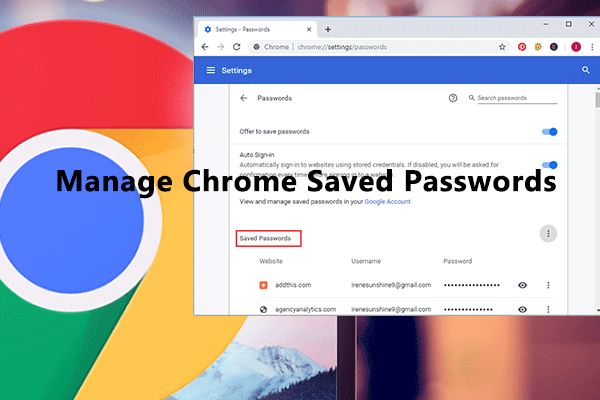

- Save passwords on google chrom for mac pro android#
- Save passwords on google chrom for mac pro password#
First, dedicated password managers provide broader and more consistent support for storing and filling in passwords within apps on your phone, which is something most of us do quite regularly.

So why is it more advisable to use a dedicated password manager instead of Google Password Manager? Well, a few reasons. If you do decide to use a standalone password manager, by the way - and we'll dive into that subject further next - you'll probably want to go back to that same "Passwords" area of Chrome's settings and disable the options for "Offer to save passwords" and "Auto Sign-in." That'll keep Chrome from doubling up on what your external password manager is also doing and keep you from seeing confusingly overlapping prompts every time you try to sign in somewhere. Those access points are all connected and constantly synced, so you'll see the same information in any of 'em - and any changes you make in one place will automatically show up everywhere else. You can also find those same settings and see all of your saved credentials by going to in any web browser. You can view and manage all your saved passwords from the Google Password Manager interface in Chrome, in Android, or on the web.
Save passwords on google chrom for mac pro android#
In Android itself, open your system settings, tap the Google section, tap the Manage Your Google Account button, then scroll over on the top-of-screen tab list until you see "Security." Tap that, then scroll all the way down to the "Signing in to other sites" card and tap the "Password Manager" option. In Chrome on Android or iOS, open the browser's settings and tap the Passwords section. In Chrome on the desktop, open the browser's settings, click the Autofill section, then click the "Passwords" option. If you ever want to look through and edit your stored passwords, adjust Password Manager's settings, or disable the system entirely, you can do the following: (More often than not within apps, it doesn't seem to be supported and simply fails to appear.) Adjusting your Password Manager setup The system is able to sign you in to certain Android apps automatically, too, though it works somewhat sporadically - and you never quite know when it'll be present. And whenever you return to a site where your credentials have been stored, Smart Lock will automatically fill them in for you - or, when more than one sign-in is associated with a single site, it'll provide you with the option to pick the account you want to use. The service will also offer to create complex new passwords for you when you're signing up for something new. You'll see the Password Manager's prompts for credential-saving pop up anytime you enter your username and password into a site within the Chrome browser. The system, once considered part of Google's Smart Lock feature, works across Android, iOS, Chrome OS, and any other desktop platform where you're signed into Chrome - and it's typically activated by default in all of those places. Google Password Manager 101įirst things first: You shouldn't have to do anything to turn the Google Password Manager on. And it's far better to rely on that than to use nothing at all. While there's a case to be made for leaning on a dedicated app for that purpose (for reasons we'll discuss further in a moment), Google has its own password management system built right into Chrome. That's where a password manager comes into play: It securely stores all your sign-in info for you and then fills it in as needed. 

With all the credentials we have to keep track of these days, there's just no way the human brain can handle the task of storing the specifics - at least, not if you're using complex, unique passwords that aren't repeated (or almost repeated, even) from one site to the next. If you're still trying to remember all of your passwords and then type 'em into sites by hand, let me tell you: You're doing it wrong.








 0 kommentar(er)
0 kommentar(er)
